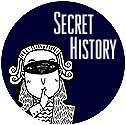
Comment
on this story |
 |

A modest proposal, and a possible national newspaper shrine
by Jack Neely
I've been gratified by the response to my proposal that Cherokee Country Club could solve its parking crisis if only a fairly small minority of members were to ride the available KAT buses (route 90) to the country club. It is, after all, one of those creaky old club traditions—that every member must drive his own car—that appears to be dooming the handsome chateau on Lyons View. I haven't heard from any actual members of the aforementioned country club about the public-transit proposal, but I'm sure they'll agree that it's a workable solution to what has become a public dilemma.
KAT director of development Belinda Boyd likes the idea, and suggested enhancing it by building a bus stop there that's architecturally consistent with the J. Allen Smith house. An Italian Renaissance Revival bus stop, perhaps with a Mediterranean clay-tile awning, might be just the touch that this troubled neighborhood needs. If successful, such an initiative would, of course, save the country club the messy bother of spoiling statewide historic-preservation programs.
See you on the bus!
Speaking of historic sites, identifying the spot that is arguably the most historic spot in Knoxville has always eluded me. Maybe I'm prejudiced, because this particular spot is especially relevant to my peculiar trade—but the spot I've sought is the place downtown where Adolph Ochs began his career in journalism.
If his name doesn't ring a bell, pick up today's New York Times. Yesterday's is fine. Or if you happen to have some old copies of the Times that your grandmother saved about the McKinley assassination or Armistice Day, they'll do just as well. His name is in big letters in every one of them. Adolph Ochs owned and founded the New York Times as we know it. He came up with the newspaper's famous slogan, allegedly based on an old slogan at Blaufeld's Cigar Store on Gay Street—All the Cigars That Are Fit To Smoke.
He died almost 70 years ago, but all the Gray Lady's later publishers have graciously left his name in their masthead. Or maybe graciousness had nothing to do with it; they're all kin to him.
Ochs grew up here, of course, and began his huge career in journalism in downtown Knoxville, when he was working first as a paperboy for Capt. William Rule's old paper, the Chronicle, and later as a typesetter, among other things. The story, one of my favorites, is that the adolescent Ochs was so spooked by the already-old Presbyterian graveyard on State Street, which lay between the newspaper office and his Central Street home, that he preferred to stay in the newspaper office past midnight. He was safe enough there, but he felt obliged to help out. He eventually learned this whole weird business inside out.
Anyway, I'm not sure there has ever been a more influential Knoxville-raised boy than Adolph Ochs, and it seemed to me the place where Ochs began his career in journalism deserved some kind of obeisance, if not a statue, plaque, or an annual Adolph Ochs hoedown. The problem was knowing exactly where to go. We know the Chronicle was on Market Square, but for years, plotting the precise spot has been a slippery prospect. The Chronicle was located there for only a few years, and it was during a period when downtown businesses didn't have addresses that corresponded to modern numbers. Some were just described by their general neighborhood. The publishers at the 1869 City Directory figured anybody could find these places if they just walked down the street and looked at the signs. The Chronicle office was "east side Market Square, near Asylum." Asylum Ave. ran along what we now call Wall.
There are, of course, several addresses that fit that description. I've wondered for years exactly where the Chronicle office was, doubting that I'd ever find out for sure. Then, last year, while wandering around in 1901 by way of the old Journal & Tribune, I ran across a gratuitous piece of filler copy. It was a list of all the previous locations of that newspaper and its forebear, the Chronicle. The Republican Reconstruction-era weekly was indeed once in Market Square, in a "one-story brick building built as a bowling alley." They described the site as the contemporary location of the J.S. Hall & Son clothing store, which was, in 1901, at 16 Market Square. That address now belongs to one of the buildings being renovated by Earth to Old City. The building that's there now is a later building, maybe 1920, two stories painted yellow, with big square windows.
But here's a surprise: according to that 1901 trivia column, the Chronicle had two different locations on Market Square. Maybe because they needed more space, they quit the old bowling alley and moved "thence north to a building occupied by McMillan and Treadwell." That small dry-goods store was located at 34 Market Square.
At 34 Market Square today—on the east side of Market Square, near Wall, formerly "Asylum"—is the neat office of the Engineering Association, Inc. It's the headquarters of a union that serves TVA engineers and technicians. These staid premises stick out a little in Market Square, which is otherwise dominated by restaurants, gentrified residences, and promising vacant spots/renovation projects. The bluish-gray two-story brick building has arched windows and Victorian ornamentation—it's clearly a 19th-century building. Maybe a teenager we called Muley Ochs once knew it well. Maybe this was his refuge from Knoxville's spookier quarters.

May 9, 2002 * Vol. 12, No. 19
© 2002 Metro Pulse
|





